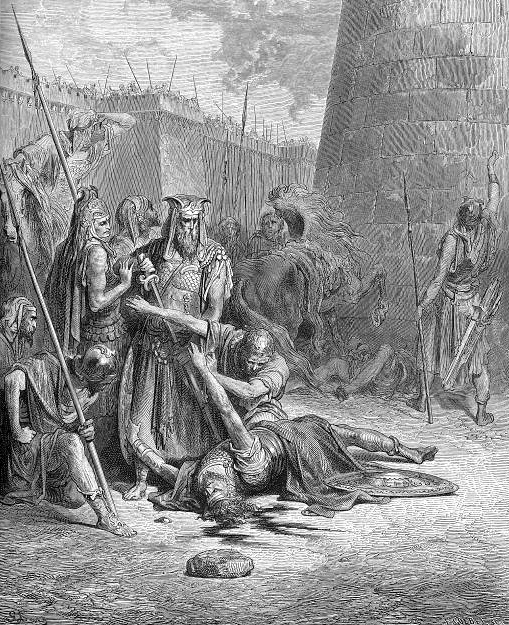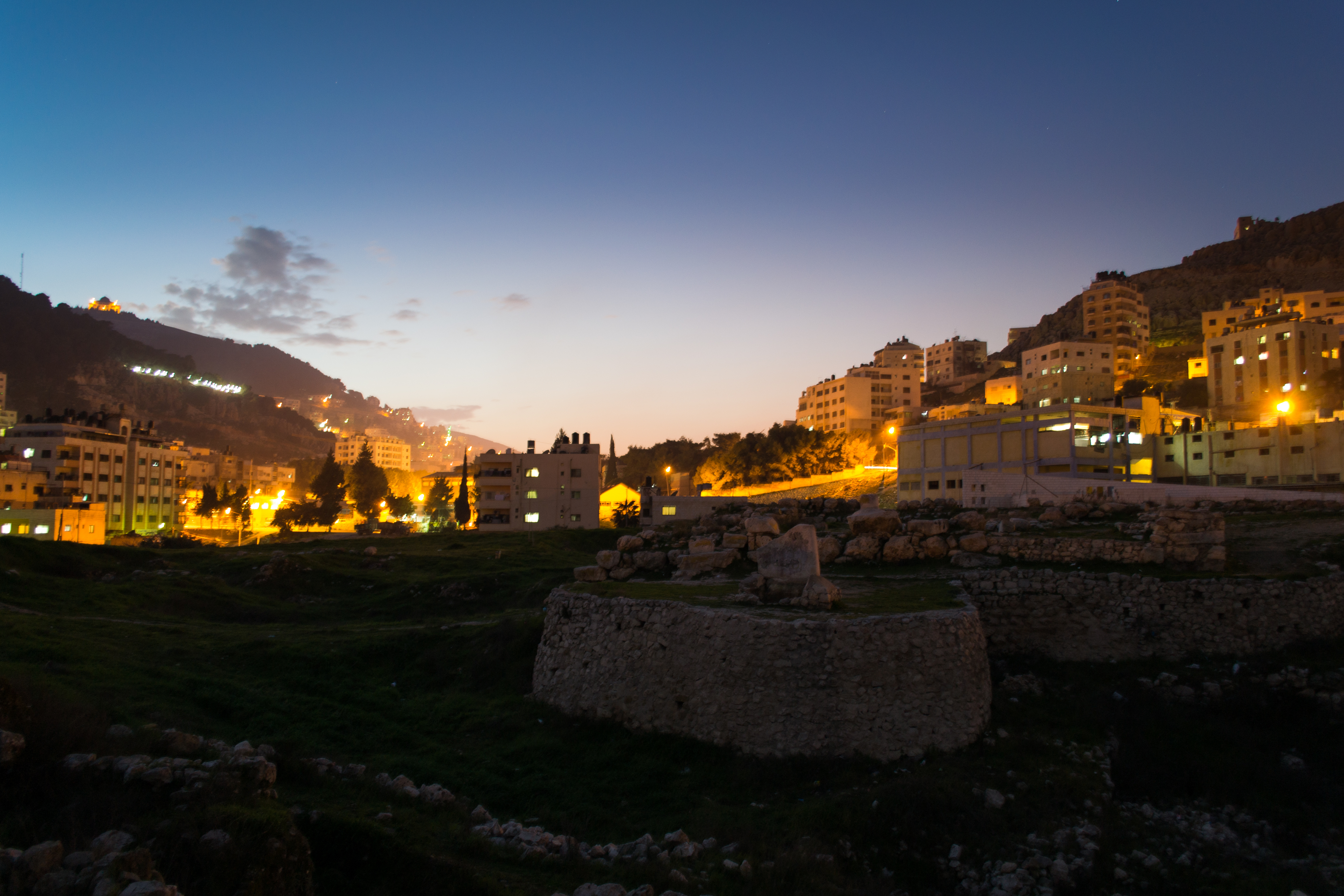|
Arumah
Arumah a biblical toponym mentioned in the Book of Judges (9:41): "Then Abimelek stayed in Arumah, and Zebul drove Gaal and his clan out of Shechem." The reference is in the context of story describing a local revolt against Abimelech, the king of Shechem by Gaal the son of Ebed. Possible locations Duma It has been suggested that ''Arumah'' was located at Duma, Nablus.Carta's Official Guide to Israel and Complete Gazetteer to all Sites in the Holy Land. (3rd edition 1993) Jerusalem, Carta, p.137, Khirbet el-'Ormeh Charles William Meredith van de Velde passed by Khirbet el-'Ormeh in 1851/2, and noted "I believe I may recognise the Arumah of Judges ix 41".Van De Velde, 1854, p. 303 __NOTOC__ Year 303 ( CCCIII) was a common year starting on Friday of the Julian calendar. It was known in the Roman Empire as the Year of the Consulship of Diocletian and Maximian (or, less frequently, year 1056 ''Ab urbe condita''). The deno ... "Amongst others, I noticed f ... [...More Info...] [...Related Items...] OR: [Wikipedia] [Google] [Baidu] |
Khirbet El-'Ormeh
Khirbet el-'Ormeh () or Horvat Ormah () is an archaeological site located in the West Bank, around ten kilometers southeast of the State of Palestine, Palestinian city of Nablus. The site contains the remains of a Hasmonean-Herodian architecture, Herodian fortress consisting of a fortification wall, rectangular towers constructed in the Hellenistic architecture, Hellenistic style, and a series of large cisterns for Rainwater harvesting, storing rainwater. The site is in Area B of the West Bank, under partial control of the State of Palestine, and has been designated as a Palestinian Heritage Site. According to 20th-century archaeologists, Khirbet el-'Ormeh was the site of a fortress with a complex water system. The fortifications that have survived were mostly on the southern end of the summit. A glacis was discovered on the east side of the wall line, at a level lower than the top of the mound, surrounding the mound on all sides. At its bottom was a hewn shaft, which also serv ... [...More Info...] [...Related Items...] OR: [Wikipedia] [Google] [Baidu] |
Duma, Nablus
Duma (, also spelled as Douma) is a Palestinian town in the Nablus Governorate in the northern West Bank, located 25 kilometers southeast of Nablus. According to the Palestinian Central Bureau of Statistics, the town had a population of 2,674 inhabitants in 2017. Duma's total land area consists of 17,351 dunams, about 200 of which are designated as built-up area. increasing in the 1931 census to 218, still all Muslims, in a total of 43 houses.Mills, 1932, p61/ref> In the 1945 statistics, Duma had a population of 310 Muslims,Department of Statistics, 1945, p18/ref> with 17,351 dunams of land, according to an official land and population survey. Of this, 580 dunams were plantations and irrigable land, 4,076 used for cereals, while 33 dunams were built-up (urban) land. Jordanian era In the wake of the 1948 Arab–Israeli War, and after the 1949 Armistice Agreements, Duma came under Jordanian rule. The Jordanian census of 1961 found 444 inhabitants. 1967-present Since the Six ... [...More Info...] [...Related Items...] OR: [Wikipedia] [Google] [Baidu] |
Abimelech (Judges)
Abimelech (; ''’'') or Abimelek was the king of Shechem and the tribal territory of Manasseh, and a son of biblical judge Gideon. His name can best be interpreted as "my father is king", claiming the inherited right to rule. He is introduced in Judges 8:31 as the son of Gideon and his Shechemite concubine, and the biblical account of his reign is described in chapter nine of the Book of Judges. According to the Bible, he was an unprincipled and ambitious ruler who often engaged in wars against his own subjects. Ascension to kingship The killing of seventy brothers According to the Book of Judges, Abimelech went to Shechem to meet with his uncles and grandfather of his mother's side, and claimed to them that he should be the sole ruler over them and Shechem and not his brothers. He asked them whether they'd prefer to be ruled by seventy rulers or just by the individual, and he affirmed them as equal brothers. Because of Abimelech's affirmation to them, the men inclined t ... [...More Info...] [...Related Items...] OR: [Wikipedia] [Google] [Baidu] |
Toponym
Toponymy, toponymics, or toponomastics is the study of ''wikt:toponym, toponyms'' (proper names of places, also known as place names and geographic names), including their origins, meanings, usage, and types. ''Toponym'' is the general term for a proper name of any geographical feature, and full scope of the term also includes proper names of all cosmographical features. In a more specific sense, the term ''toponymy'' refers to an inventory of toponyms, while the discipline researching such names is referred to as ''toponymics'' or ''toponomastics''. Toponymy is a branch of onomastics, the study of proper names of all kinds. A person who studies toponymy is called ''toponymist''. Etymology The term ''toponymy'' comes from / , 'place', and / , 'name'. The ''Oxford English Dictionary'' records ''toponymy'' (meaning "place name") first appearing in English in 1876 in the context of geographical studies. Since then, ''toponym'' has come to replace the term ''place-name'' in profe ... [...More Info...] [...Related Items...] OR: [Wikipedia] [Google] [Baidu] |
Book Of Judges
The Book of Judges is the seventh book of the Hebrew Bible and the Christian Old Testament. In the narrative of the Hebrew Bible, it covers the time between the conquest described in the Book of Joshua and the establishment of a kingdom in the Books of Samuel, during which Hebrew Bible judges, Biblical judges served as temporary leaders. The stories follow a consistent pattern: the people are unfaithful to Yahweh; he therefore delivers them into the hands of their enemies; the people repent and entreat Yahweh for mercy, which he sends in the form of a leader or champion; the judge delivers the Israelites from oppression and they prosper, but soon they fall again into unfaithfulness and the cycle is repeated. The pattern also expresses a repeating cycle of wars. But in the last verse (21:25) there is a hint that the cycle can be broken—with the establishment of a monarchy. While most contemporary critical scholars reject the historical accuracy of the Book of Judges, some arg ... [...More Info...] [...Related Items...] OR: [Wikipedia] [Google] [Baidu] |
Zebul (biblical Figure)
Zebul ( ''Zəḇul '') is a character in the Hebrew Bible, appearing in Judges 9. He is one of Abimelech's officers, and the governor (or "commandant") of the city of Shechem. Zebul played an important role in the rebellion and defeat of Gaal, secretly sending messengers to Abimelech and warning him of the situation. Barry Webb describes him as a loyal friend of Abimelech, and a "shrewd military tactician". In Handel's oratorio ''Jephtha'', Zebul is depicted as Jephthah Jephthah (pronounced ; , ''Yiftāḥ'') appears in the Book of Judges as a judge who presided over Israel for a period of six years (). According to Judges, he lived in Gilead. His father's name is also given as Gilead, and, as his mother is de ...'s brother. References {{reflist Book of Judges people Shechem Phoenicians in the Hebrew Bible ... [...More Info...] [...Related Items...] OR: [Wikipedia] [Google] [Baidu] |
Gaal (biblical Figure)
Gaal (Hebrew:גַּעַל) was a minor 12th century BCE biblical character, introduced in the 9th chapter of Judges in the Hebrew Bible as the son of Ebed or Eved, or the son of a slave. His story is told in . Gaal had occupied Shechem and boasted to Zebul, the ruler of Shechem, that he could defeat Abimelech. Zebul secretly warned Abimelech of Gaal's plans and offered a plan to defeat Gaal. Abimelech defeated Gaal and drove him back to the gates of Shechem. Zebul subsequently drove Gaal and his remaining kinsmen from Shechem altogether. He is not mentioned thereafter in the Bible. Daniel I. Block suggests that he may have been one of the "Lords of Shechem" (, the wording of the New Revised Standard Version The New Revised Standard Version (NRSV) is a translation of the Bible in American English. It was first published in 1989 by the National Council of Churches, the NRSV was created by an ecumenical committee of scholars "comprising about thirt ... and New American Bib ... [...More Info...] [...Related Items...] OR: [Wikipedia] [Google] [Baidu] |
Shechem
Shechem ( ; , ; ), also spelled Sichem ( ; ) and other variants, was an ancient city in the southern Levant. Mentioned as a Canaanite city in the Amarna Letters, it later appears in the Hebrew Bible as the first capital of the Kingdom of Israel (Samaria), Kingdom of Israel following the split of the Kingdom of Israel (united monarchy), United Monarchy. According to , it was located in the tribal territorial allotment of the tribe of Ephraim. Shechem declined after the fall of the Kingdom of Israel (Samaria), northern Kingdom of Israel. The city later regained its importance as a prominent Samaritans, Samaritan center during the Hellenistic Palestine, Hellenistic period. Traditionally associated with the city of Nablus, Shechem is now identified with the nearby site of Tell Balata in the Balata al-Balad suburb of the West Bank. Geographical position Shechem's position is indicated in the Hebrew Bible: it lay north of Bethel and Shiloh (Biblical city), Shiloh, on the high road ... [...More Info...] [...Related Items...] OR: [Wikipedia] [Google] [Baidu] |
Charles William Meredith Van De Velde
Charles William Meredith van de Velde (December 4, 1818, in Leeuwarden – 20 March 1898 in Menton) was a Dutch lieutenant-at-sea second class, painter, cartographer, honorary member of the Red Cross and missionary. Van der Velde attended the Naval Academy in Medemblik and became Lieutenant-sea second class. From 1830 to 1841 he worked at the topographical office in modern-day Jakarta where he eventually became director. In 1844 he had to return to Europe for health reasons, where he carried out cartographic, geographic and ethnographic work and was also employed as a draftsman, and missionary nurse. In 1844, on his return to Europe, he visited Ceylon, the Transvaal and Cape of Good Hope, where he supported the work of missions and for his services provided to French ships, was awarded a Legion of Honour. Palestine In 1851 Van de Velde visited Palestine, where he carried out various surveys, drawings, paintings and around one hundred watercolours for postcards. After his trip ... [...More Info...] [...Related Items...] OR: [Wikipedia] [Google] [Baidu] |



